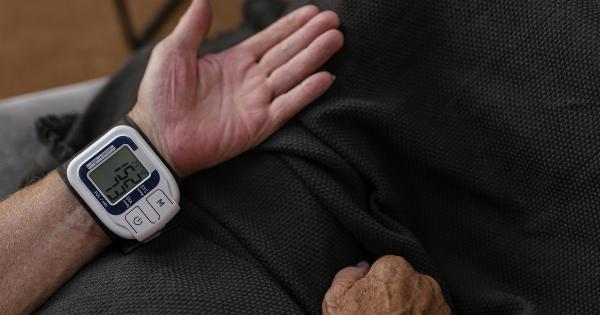Fever is a common symptom that indicates an underlying medical condition. It often accompanies illnesses such as the common cold, flu, or even more serious conditions like COVID-19.
Monitoring body temperature is crucial in assessing the severity of an illness and determining the appropriate course of action. Traditional thermometers such as oral, tympanic, or rectal thermometers have been widely used for temperature monitoring.
However, advancements in technology have led to the development of innovative and convenient alternatives, including the sticker thermometer.
What is a Sticker Thermometer?
A sticker thermometer, also known as a fever patch or fever strip, is a non-invasive device used to measure body temperature. It consists of a thin strip with temperature-sensitive material that changes color according to the detected temperature.
The strip adheres to the skin, typically on the forehead or under the armpit, providing continuous temperature monitoring without causing discomfort or disturbing the individual’s sleep.
How Does it Work?
The sticker thermometer contains liquid crystals that react to temperature changes. When the strip is applied to the skin, the liquid crystals respond to the body’s heat, causing the strip to change color.
The color change corresponds to different temperature ranges, allowing caregivers or individuals to quickly and easily interpret the results.
Benefits of Using a Sticker Thermometer
1. Convenience: Sticker thermometers are incredibly convenient to use, especially in situations where frequent temperature monitoring is needed, such as during illness or for infants.
2. Non-invasive: Unlike traditional thermometers, sticker thermometers do not require any insertion into the body or disturbance of sleep. They adhere comfortably to the skin without causing any discomfort or irritation.
3. Continuous Monitoring: Sticker thermometers provide continuous temperature monitoring, allowing for real-time assessment of fever progression.
4. Suitable for All Ages: Sticker thermometers are suitable for individuals of all ages, including infants, children, and adults.
5. Hygienic: Sticker thermometers are typically disposable, reducing the risk of cross-contamination and the spread of germs.
6. Easy Interpretation: The color-coded temperature ranges on the sticker thermometer make it easy for caregivers or individuals to interpret the results accurately.
How to Use a Sticker Thermometer
Using a sticker thermometer is a straightforward process:.
1. Remove the sticker thermometer from its packaging, ensuring that the strip remains intact and undamaged.
2. Clean and dry the area where the sticker thermometer will be applied, typically the forehead or underarm.
3. Gently adhere the sticker thermometer to the desired area, ensuring that it makes good contact with the skin.
4. Allow a few moments for the sticker thermometer to adjust to the body’s temperature.
5. Observe the color change on the strip and refer to the accompanying temperature chart to determine the body temperature.
Accuracy and Reliability
Sticker thermometers are generally considered reliable in providing accurate temperature readings. However, it is vital to note that they may have a slight margin of error compared to traditional thermometers.
Factors such as ambient temperature, excessive sweating, or improper application of the sticker thermometer can potentially affect the accuracy of the readings. Therefore, it is recommended to consult a healthcare professional for further evaluation if there are concerns about the individual’s health condition or accuracy of the readings.
Limitations of Sticker Thermometers
While sticker thermometers offer numerous benefits, it is important to be aware of their limitations:.
1. Temperature Range: Sticker thermometers are designed to measure body temperatures within a specific range. If the individual’s temperature falls outside this range, the sticker thermometer may not provide accurate results.
2. Single Usage: Most sticker thermometers are disposable and intended for single use only. Once removed from the skin, they cannot be reapplied or reused.
3. Margin of Error: As mentioned earlier, sticker thermometers may have a slight margin of error compared to traditional thermometers.
4. User Interpretation: While the color-coded temperature chart facilitates interpretation, accurate reading interpretation still relies on the user’s judgment.
When to Seek Medical Attention
While sticker thermometers are useful tools for monitoring body temperature, they do not provide a diagnosis for underlying medical conditions.
It is essential to recognize the signs and symptoms that warrant medical attention, especially in cases of fever. Seek medical attention if:.
– The individual is an infant under 3 months old with a rectal temperature of 100.4°F (38°C) or higher.
– The temperature is persistently high (over 102.2°F or 39°C) in adults or children.
– The individual experiences accompanying symptoms such as difficulty breathing, severe headache, neck stiffness, confusion, or seizures.
– The fever lasts for more than three days.
– The individual has an underlying medical condition or weakened immune system.
In Conclusion
Sticker thermometers provide a convenient and non-invasive method for monitoring body temperature. They offer continuous temperature monitoring without disturbing sleep or causing discomfort to individuals.
While they are generally accurate and reliable, it is crucial to understand their limitations and consult a healthcare professional if there are concerns about an individual’s health condition. Sticker thermometers are a valuable addition to home health monitoring kits, providing quick and easy temperature assessment for individuals of all ages.






























